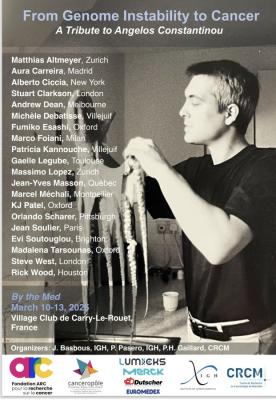We will present a novel technique that we have established to engineer targeted gene modifications in the Caenorhadbitis elegans genome using transgene-instructed gene conversion to repair a DNA double-strand break (DSB) made by the excision of the DNA transposon Mos1. Mos1 is a Drosophila transposon. By expressing its transposase in the C. elegans germline, transgenic Mos1 copies are mobilized and single genomic Mos1 insertions can be recovered. We showed that after the excision of a genomic Mos1 insertion, a DSB is made and can be repaired by recombination, using, for instance, an homologous transgene as a repair template. By this technique, point mutations, deletion or exogenous sequences present on the repair template could be introduced into the genome with frequencies ranging from 10-5 to 10-4 events per generation. Such efficiencies show that Mos1 induced transgene instructed gene conversion (or MosTIC) is a powerful method to engineer the C. elegans genome.
Over the course of MosTIC establishment, we identified several types of DSB repair events showing that alternative pathways, such as End-Joining (EJ), could compete with homologous recombination to repair a DSB in the C. elegans germline. Interstingly, further characterization of this pathway showed that it does not depend on Ku80 and Ligase IV, two factors described as essential for EJ in many organisms.
Finally, we will present the use of MosTIC to engineer the genes encoding the subunits of the acetylcholine receptors and show that the development of tagged subunits is a first step towards the establishment of a novel strategy to study synaptic transmission in C. elegans.



